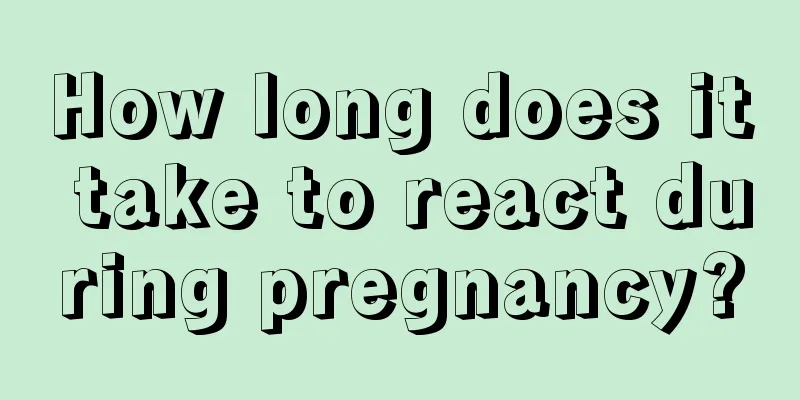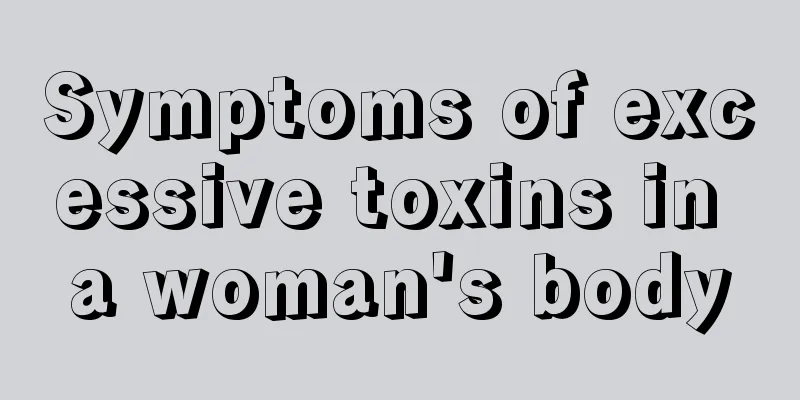Can I have induced labor after a caesarean section?

|
I believe that many female friends prefer natural childbirth. Caesarean section is very harmful to the body and often takes a long time to recover. It takes some time before you can have a second child. You have to wait until the body has fully recovered before you can have a second child. So, can you have induced labor after a caesarean section? Let's take a look at the relevant content below. Induced labor refers to the use of artificial methods to induce uterine contractions to end pregnancy after 12 weeks of pregnancy due to maternal or fetal reasons. There is a big difference between induced labor and miscarriage. Induction of labor is generally divided into mid-pregnancy induction of labor and late-pregnancy induction of labor. Experts say: Generally speaking, it will take about 2 years for a woman to become pregnant after a caesarean section. If you don't want the child, you can have an induced abortion, but you have to go to a regular hospital. The main risk is uterine rupture. Please follow the instructions of the attending physician for specific matters. After an artificial abortion, the endometrium needs to be repaired, so it is best to get pregnant after six months. What situations require induction of labor? 1. Pregnant women with excessive amniotic fluid: When a pregnant woman has excessive amniotic fluid, the fundus of the uterus will rise rapidly, compressing the pregnant woman's stomach and even causing the heart to shift, often causing palpitations, shortness of breath, difficulty lying flat, and affecting sleep and diet. If a doctor confirms that polyhydramnios may cause adverse reactions in the pregnant woman and fetal malformations, induced labor and termination of pregnancy should be initiated immediately. 2. Pregnant women with chronic nephritis: Some patients are not suitable for pregnancy. Pregnancy will increase the burden on the kidneys, aggravate various symptoms, and is not conducive to the growth and development of the fetus and the recovery of the mother. In this case, induced labor should be performed as soon as possible to end the pregnancy. 3. Pregnant women with severe preeclampsia: The disease occurs in the middle and late stages of pregnancy. The small blood vessels in the pregnant woman's body contract, and she experiences high blood pressure, headache, dizziness, vomiting, lower limb edema, and protein excretion in the urine. If the condition does not improve after treatment, if the pregnancy continues, convulsions (eclampsia) or premature separation of the placenta and the uterine wall may occur, which can cause heavy uterine bleeding, fetal hypoxia (asphyxia), and even the risk of death in the uterus. Therefore, in cases of severe preeclampsia, labor should be induced. 4. Intrauterine fetal death: If a pregnant woman feels that the fetal movement has disappeared and the doctor confirms that the fetus has died in the uterus, induced labor should be performed immediately to eliminate the dead fetus and ensure the safety of the pregnant woman. |
<<: How to treat cervical hypertrophy caused by vaginitis? Chinese medicine treatment is effective
>>: Can I drink pigeon soup after giving birth?
Recommend
I am pregnant for more than three months and my stomach is a little swollen and painful
Three months of pregnancy is still a relatively r...
Why do I want to eat spicy food before my period?
As long as women are healthy, they will have mens...
Why is my belly still so big after giving birth?
During pregnancy, pregnant women eat more high-nu...
The feeling of water breaking
Women are often nervous when their due date is ap...
Causes of vulvar itching and pain
I believe everyone must know the importance of th...
Can pregnant women drink Sprite?
Sprite is a drink that many people have been drin...
How to exercise for middle-aged women
Now we are paying more and more attention to our ...
Causes of leucorrhea and blood in early pregnancy
Every pregnant woman pays close attention to her ...
Why is my menstrual period always dirty?
When irregular menstruation occurs, the first rea...
Will a 19-year-old girl's breasts still grow bigger?
The breasts of a 19-year-old girl are in the stag...
【Health Lecture】Health guidance for elderly with chronic heart failure
In order to ensure the popularization effect of l...
What?! There are benefits to being hungry?
Since I was a kid, I have heard my elders say: &q...
Pictures of early symptoms of female genital eczema
Genital warts are a reproductive tract infection ...
How many days of missed menstruation is normal?
For adult women, menstruation is something they h...









